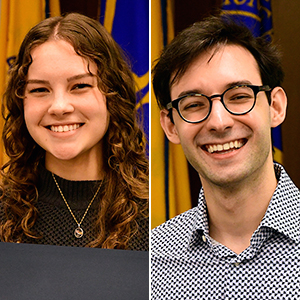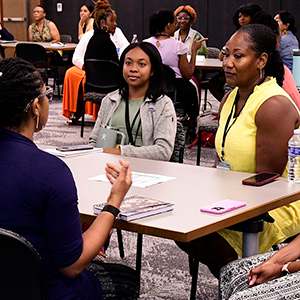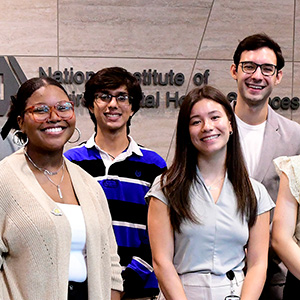On April 1, NIEHS staff led an interactive meeting with nearly 250 students at Athens Drive High School, a magnet school in Raleigh, North Carolina focused on medical sciences and global health initiatives. The scientists and students covered many of the most pressing science and health issues, including antimicrobial resistance, vaccinations, cell phone radiofrequency radiation, genetic engineering, and environmental contaminants like Gen X.
The discussion was thought-provoking and at times funny. The experience provided inspiration and background for the students as they picked research topics for their upper-level English writing projects.
Huei-Chen Lee, Ph.D., from the NIEHS Office of Science Education and Diversity, was accompanied by NIEHS scientists Ron Cannon, Ph.D.; Bob Petrovich, Ph.D.; and Tom Randall, Ph.D.
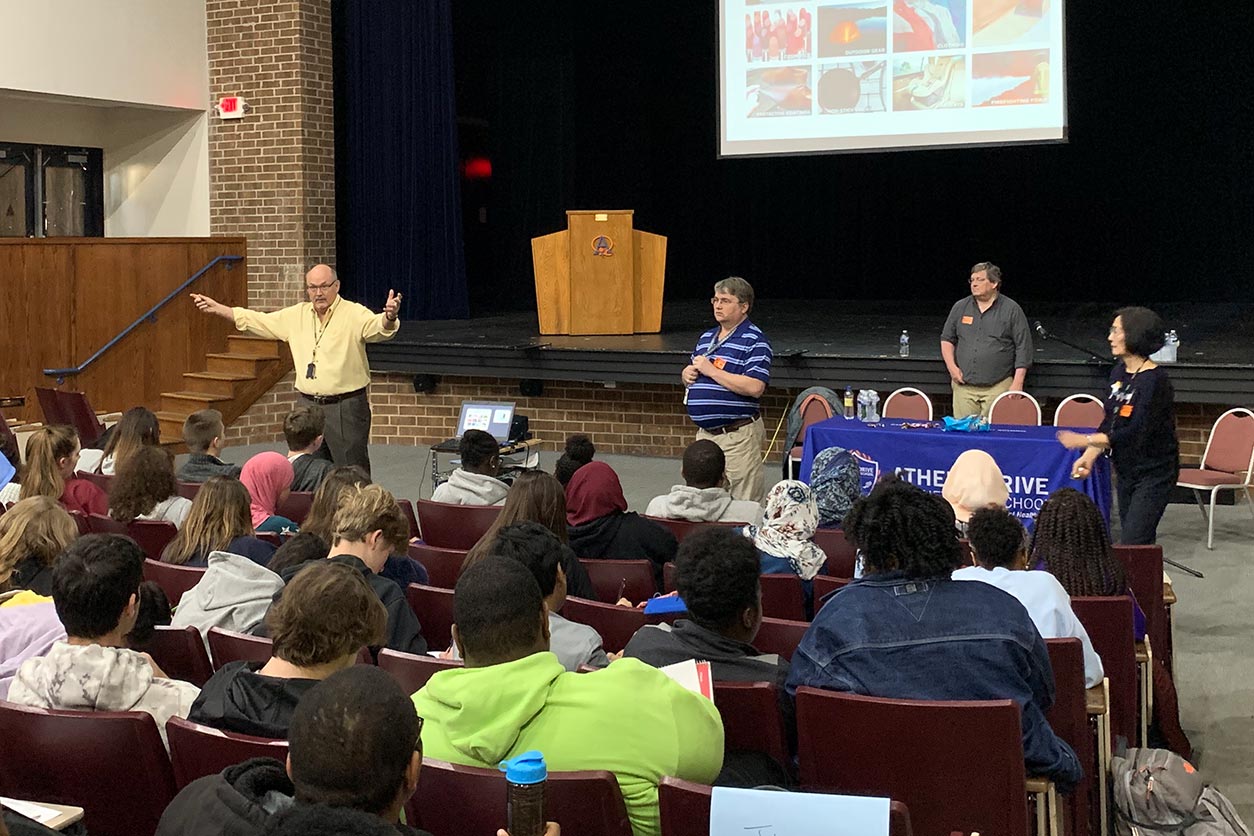 From left, Cannon, Petrovich, Randall, and Lee explained how most people’s blood contains per- and polyfluoroalkyl substances, or PFAS, which are used in a wide range of products. “What is the risk versus reward?” Cannon challenged the students to ponder. “How do you weigh those?” (Photo courtesy of Marla Broadfoot)
From left, Cannon, Petrovich, Randall, and Lee explained how most people’s blood contains per- and polyfluoroalkyl substances, or PFAS, which are used in a wide range of products. “What is the risk versus reward?” Cannon challenged the students to ponder. “How do you weigh those?” (Photo courtesy of Marla Broadfoot)“The goal is to create a hook,” said Lauren Johnson, an English teacher at the school. “These assignments are about voice and choice. The students have a chance to choose any topic that interests them…. This discussion exposed the students to many different topics and gave them firsthand information from scientists working in those areas, which is pretty catalyzing.”
Staying current
At the start of the meeting, Lee named 5 different environmental health issues chosen from a list of 17 topics provided by Athens Drive teachers. For each one, she asked the students to raise their hands if they had ever heard of them.
“I am impressed,” she said as students’ hands shot into the air. “This is a group interested in current events.” Lee has visited Athens Drive many times since NIEHS helped it transition into a magnet school in 2016.
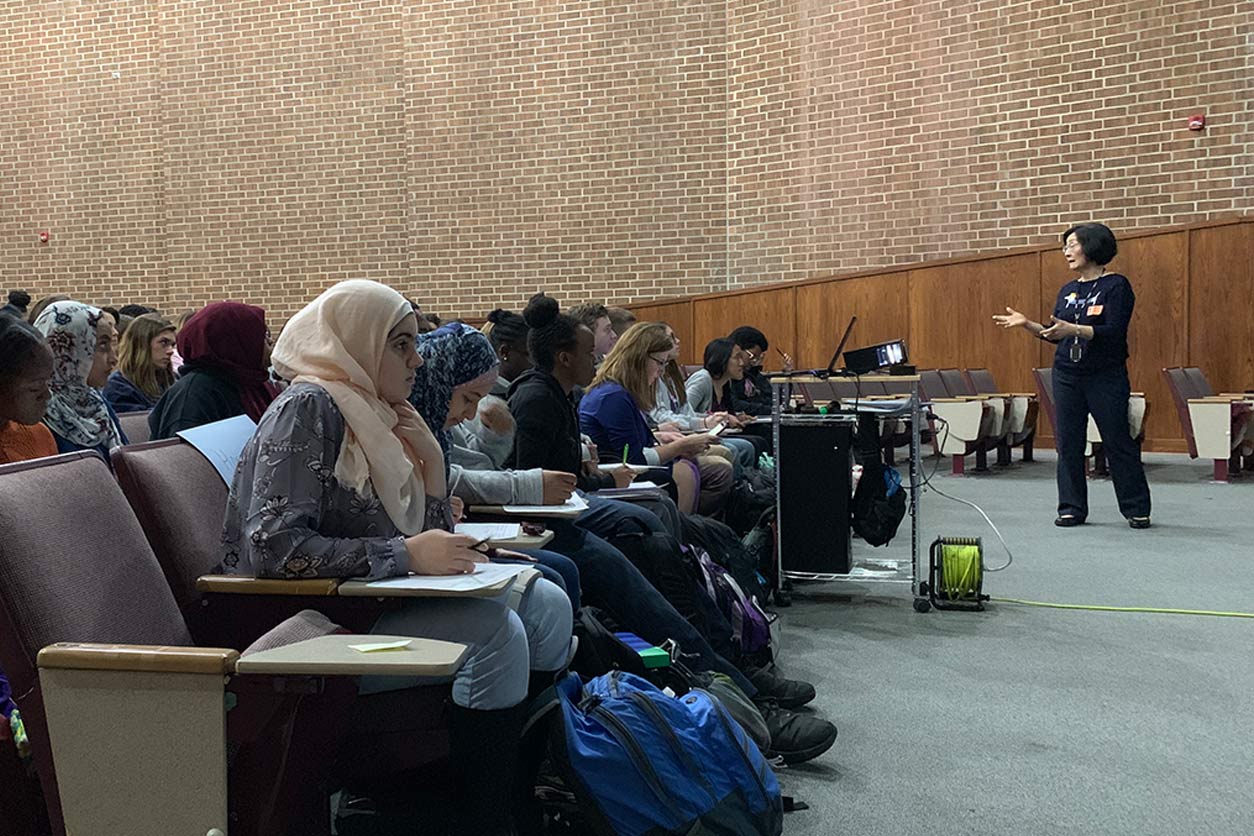 Lee told the diverse crowd of students that she wanted to hear their thoughts. (Photo courtesy of Marla Broadfoot)
Lee told the diverse crowd of students that she wanted to hear their thoughts. (Photo courtesy of Marla Broadfoot)Also in attendance was Cheryl Moy, Ph.D., a STEM (science, technology, engineering, and math) teaching assistant professor at the University of North Carolina at Chapel Hill. She observed the events, to learn about ways to adapt her methods from college to high school students.
Thinking critically
During the session, the scientists discussed not just what they know, but how they know what they know. For example, they described the 2018 National Toxicology Program cell phone study that linked high doses of cell phone radiofrequency radiation to tumor development in male rats.
The same critical thinking skills used to draw conclusions in that report could also be used to compose the students’ English papers, the researchers explained.
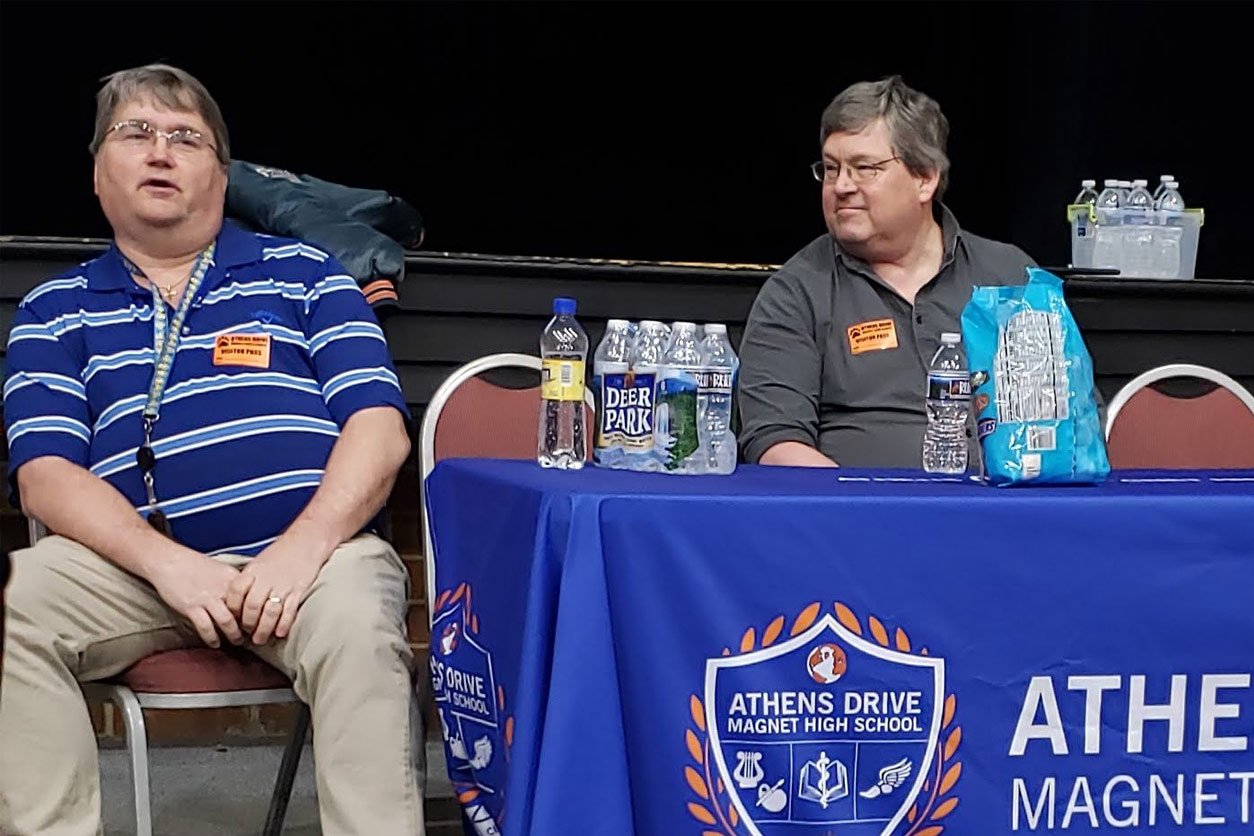 From left, visiting scientists Petrovich, Randall, and Cannon (not shown) led the first town-hall-style meeting on environmental health topics at Athens Drive High School. (Photo courtesy of Kiah Harris)
From left, visiting scientists Petrovich, Randall, and Cannon (not shown) led the first town-hall-style meeting on environmental health topics at Athens Drive High School. (Photo courtesy of Kiah Harris)“Gather your data and resources, and choose a side on a topic,” said Cannon. “When you get that data, you have to be very critical. Even if a scientist says it is so, question it. Always read papers with skepticism and with a critical eye.”
Cannon shared his personal opinion that the biggest issue with cell phones is not the radiation per se, but rather the time spent away from other health-promoting activities. One student in the front row looked at her phone and announced that her weekly screen time total was 38 hours, prompting laughter from the rest of the audience.
“I would have given anything to have this as a high schooler. This is awesome!” said Tonya Hinton, magnet coordinator at the school.
The relationship between the school and the institute extends beyond English class. On April 8, members of the school’s Spanish Club visited NIEHS and met with scientists and staff who spoke with them in Spanish about the institute’s research and operations.
(Marla Broadfoot, Ph.D., is a contract writer for the NIEHS Office of Communications and Public Liaison.)





